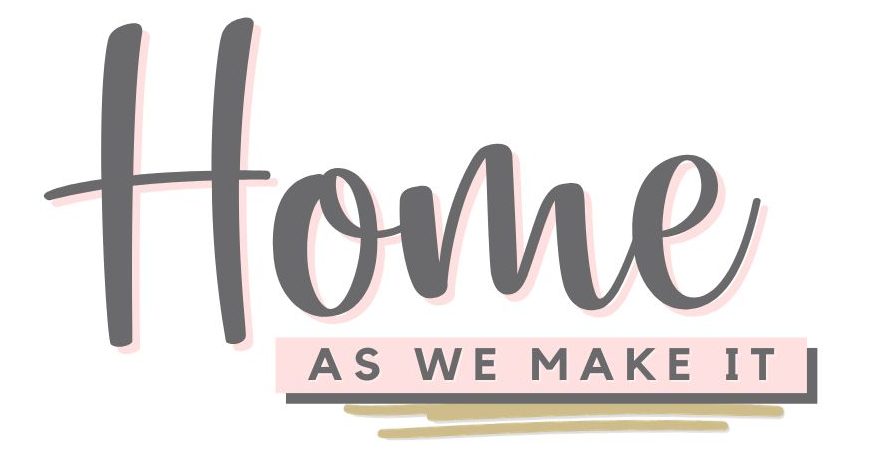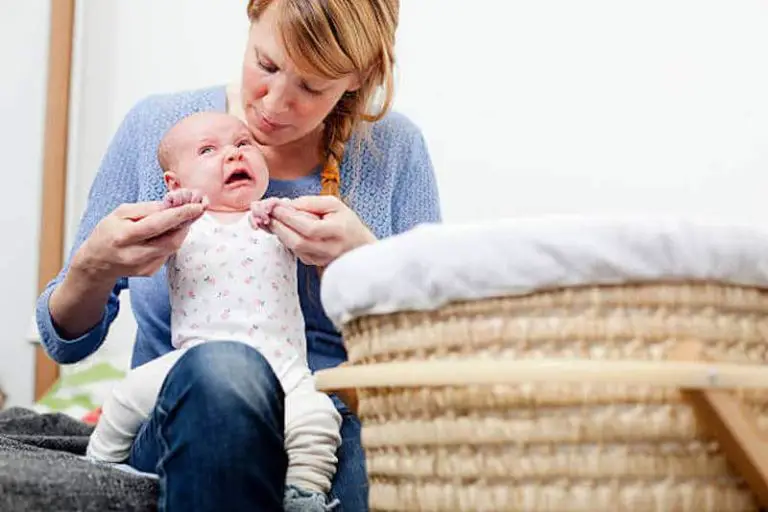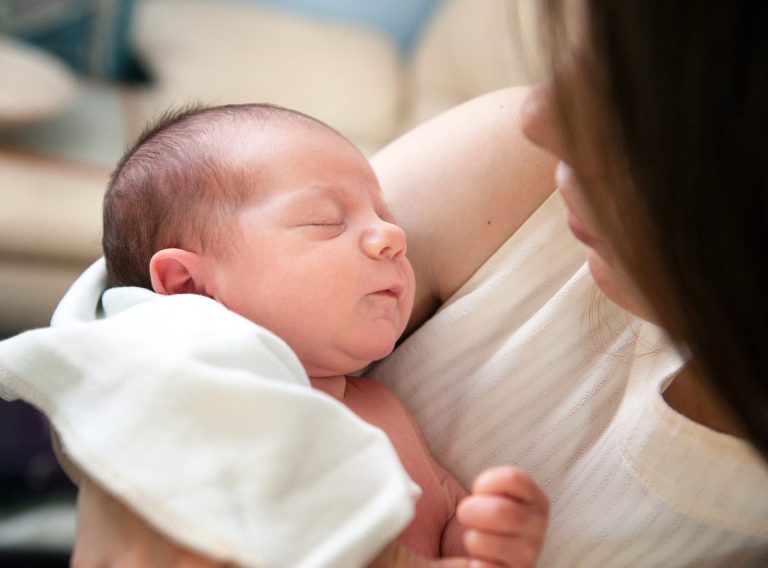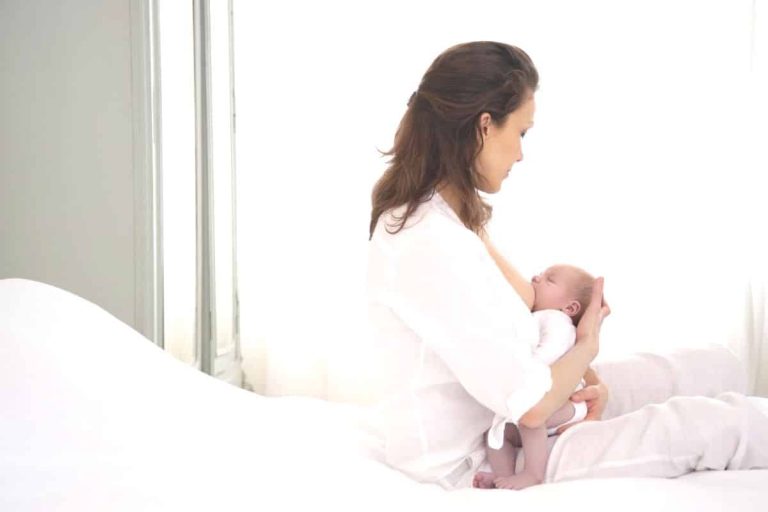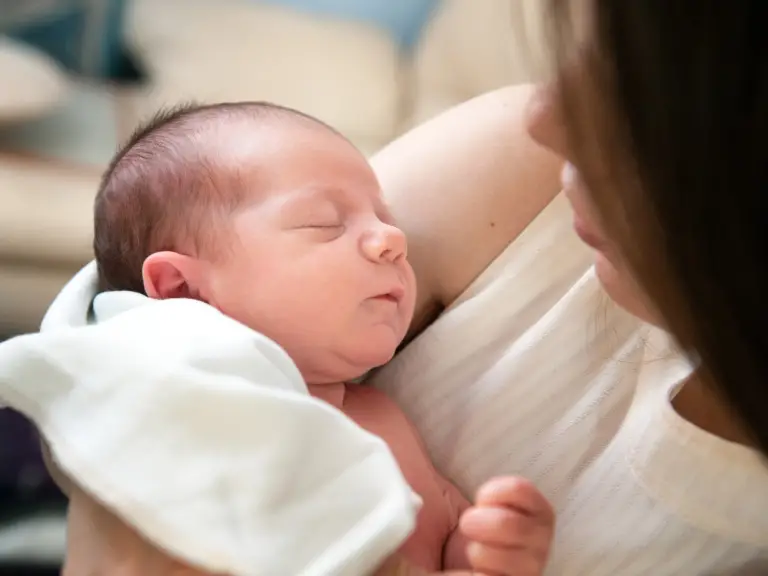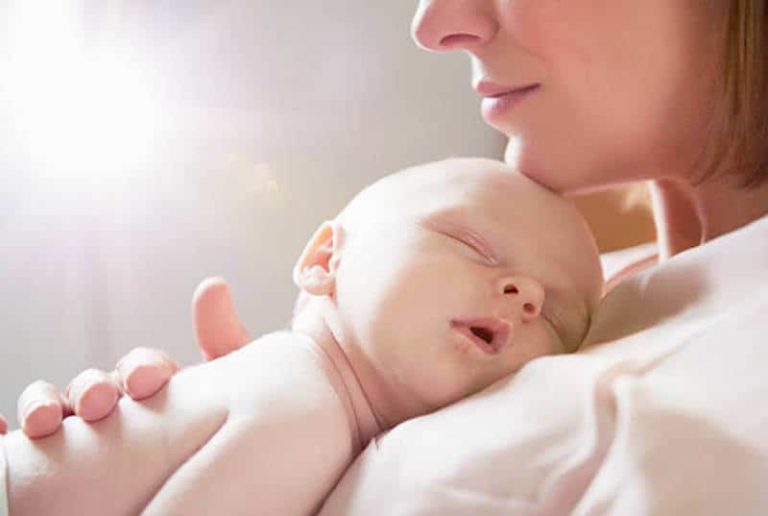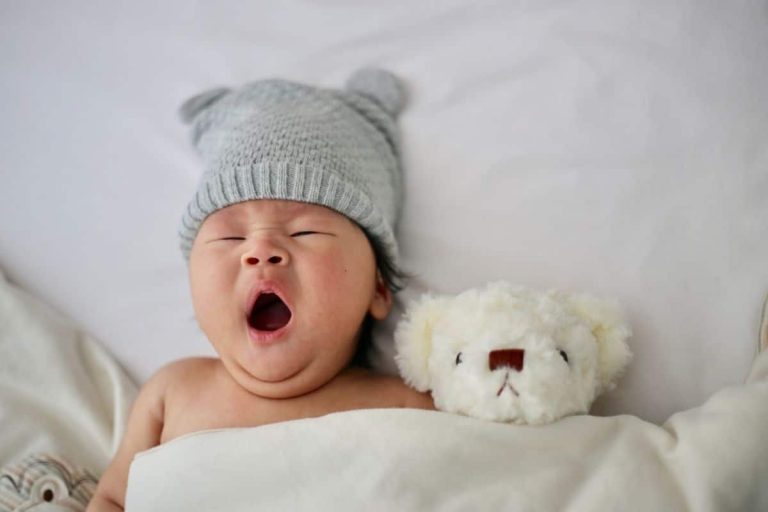Creating A Safe Sleeping Environment For Your Newborn
Congratulations on the arrival of your precious newborn! As a new parent, you want to do everything in your power to keep your little one safe and healthy. One of the most important things you can do is create a safe sleeping environment for your baby.
The American Academy of Pediatrics recommends that babies sleep on their backs, on a firm and flat surface, free from any soft bedding or objects that could pose a suffocation risk. This may seem like common sense, but there are many factors to consider when creating a safe sleep space for your newborn.
Note: This post may contain affiliate links, which means if you buy from my link I might make a small commission. This does not affect the price you pay. See the full affiliate disclosure here.
In this article, we’ll discuss some key tips for choosing the right crib and mattress, dressing your baby appropriately for sleep, keeping the sleeping environment safe, following safe sleeping practices, and checking on your baby regularly throughout the night.
By implementing these strategies, you can help ensure that your little one gets the restful and secure sleep they need to grow and thrive.
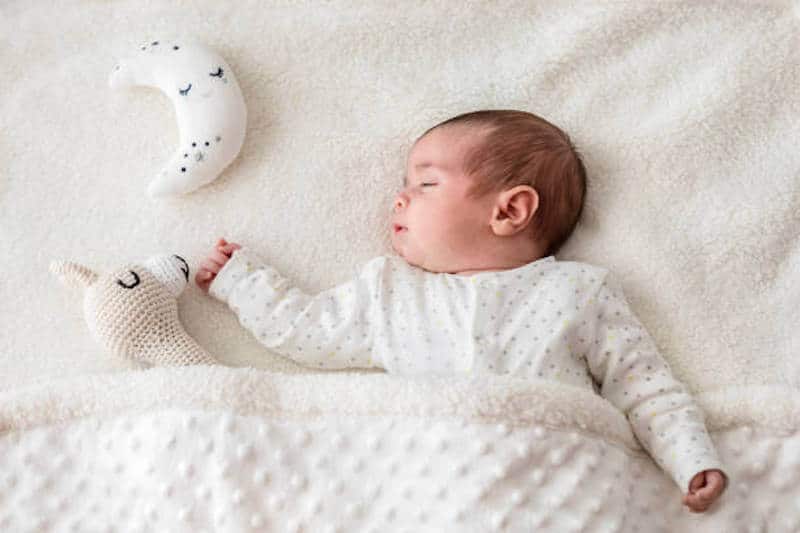
Choose the Right Crib and Mattress
You’ll want to choose the perfect crib and mattress for your little one.
When it comes to selecting a crib, make sure it meets all safety standards and is the right size for your baby. The American Academy of Pediatrics recommends that cribs should have slats no more than 2 3/8 inches apart, as well as no corner posts or cutouts in the headboard or footboard.
Additionally, ensure that the mattress fits snugly inside the crib with no gaps between the mattress and sides of the crib.
In addition to choosing a safe crib, you should also consider mattress firmness and materials when creating a safe sleeping environment for your newborn. Many experts suggest using an organic mattress option made from natural materials that are free of harmful chemicals.
It’s important to note that firmer mattresses are generally safer for infants, as they reduce the risk of suffocation or Sudden Infant Death Syndrome (SIDS).
By taking these factors into consideration when selecting a crib and mattress for your little one, you can rest assured that you’ve created a safe sleeping environment where they can thrive.
Dress Your Baby Appropriately
Make sure your baby is dressed appropriately for bedtime to ensure they stay comfortable and safe throughout the night. When it comes to choosing fabric, opt for materials that are breathable and soft, such as cotton or bamboo. Avoid synthetic fabrics that can cause irritation and overheating.
Additionally, dressing your baby in layers can help with temperature control. This allows you to add or remove clothing depending on the room’s temperature.
Another important aspect of dressing your baby for bedtime is considering the room’s temperature. The ideal temperature range for a baby’s sleeping environment should be between 68-72°F (20-22°C). Dressing your little one appropriately based on this temperature range will keep them cozy without causing overheating.
Remember, overheating can increase the risk of Sudden Infant Death Syndrome (SIDS), so it’s important to choose clothing that won’t cause excessive sweating or discomfort during sleep time.
By keeping these tips in mind, you can create a safe and comfortable sleeping environment for your newborn.
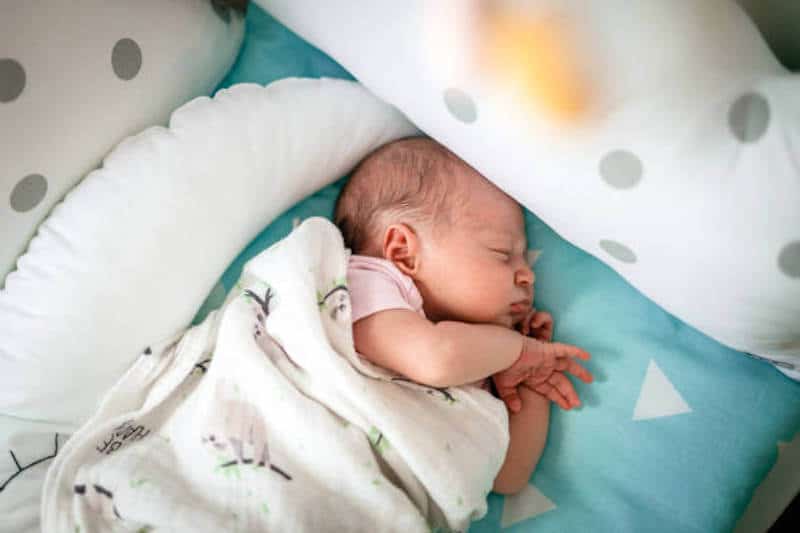
Keep the Sleeping Environment Safe
It’s crucial to ensure your baby’s sleep space is free from any potential hazards that could harm your little one. One important aspect of creating a safe sleeping environment is knowing how to dress your baby appropriately, as discussed in the previous subtopic. However, it’s equally important to pay attention to the temperature of the room and use swaddle blankets correctly.
To help you understand why these factors are so critical, let’s take a closer look at how they impact your baby’s safety. In the table below, imagine for a moment that you’re holding your newborn in your arms while trying to make sense of the information presented.
As you read through each row, consider what it would feel like if your little one were experiencing those conditions. By evoking an emotional response in this way, we hope to impress upon you just how vital it is to keep a watchful eye on these details when putting together your baby’s sleep space.
| Room Temperature | Swaddle Blanket | How Your Baby May Feel |
|---|---|---|
| —————— | —————- | ———————— |
| Too Hot | Too Thick | Sweaty and Uncomfortable |
| Too Cold | Too Thin | Shivering and Miserable |
| Just Right | Just Right | Cozy and Content |
Remember that creating a safe sleeping environment for your newborn involves more than simply providing them with warmth and security – it also means staying vigilant about any potential risks or hazards.
Use swaddle blankets correctly by choosing appropriate thicknesses for different room temperatures, as indicated in our table above. By doing so, you can help ensure that your little one feels comfortable and content during their precious hours of rest.
Follow Safe Sleeping Practices
When it comes to putting your little one down for a nap, don’t forget to follow safe sleeping practices. One of the most important things you can do is place your baby on their back to sleep. This reduces the risk of sudden infant death syndrome (SIDS).
It’s also important not to use any pillows, blankets or stuffed animals in the crib with your baby as they can increase the risk of suffocation. Opt for a fitted sheet and dress your little one in appropriate clothing instead.
Swaddling techniques are also helpful in creating a safe sleeping environment for your newborn. Swaddling helps babies feel secure and can prevent them from waking themselves up due to their startle reflex. However, it’s important to make sure that the swaddle is snug but not too tight as this can interfere with breathing.
Always leave enough room around the hips and legs so that movement is not restricted. By following these simple guidelines, you’ll be able to create a peaceful and safe sleeping environment for your little one.
Check Your Baby Regularly
As a parent, it’s important to consistently check on your baby to ensure their safety and well-being. Utilizing a baby monitor can provide peace of mind as you go about your daily routine while still being able to keep an ear out for any sounds or movements from your little one.
Keeping your baby close by during sleep and playtime can also help you quickly respond if they need attention. Trusting your instincts is key – if something doesn’t seem right with your baby, don’t hesitate to seek professional advice or take action to ensure their safety.
Use a Baby Monitor
Using a baby monitor can give you peace of mind, knowing that you can keep an ear on your little one from another room.
There are various types of baby monitors available in the market, ranging from audio to video and even movement monitors. When choosing a baby monitor, consider the features it offers such as clear sound quality, range, battery life, and night vision.
Choose a baby monitor that suits your specific needs. If you live in a small apartment or house, an audio-only monitor may suffice. However, if you have multiple floors or rooms in your home, a video or movement monitor may be more suitable.
Remember to always place the monitor at least 3 feet away from the crib and out of reach of your child.
Using a baby monitor allows you to rest easy knowing that you can hear or see your newborn whenever they need you without disturbing their sleep.
Keep Your Baby Close By
Make sure to keep your little one close by at all times, so you can easily attend to their needs and provide them with comfort whenever they need it. This is especially important during the first few months of your baby’s life when they require frequent feedings and diaper changes. Keeping your baby close by also helps them feel secure and promotes bonding between you and your child.
Here are three ways that keeping your baby close by can benefit both you and your little one:
- Co-sleeping: Sleeping in the same room as your baby has been shown to reduce the risk of SIDS (Sudden Infant Death Syndrome) by up to 50%. It also makes nighttime feedings easier for breastfeeding mothers.
- Babywearing: Wearing your newborn in a carrier or sling allows you to have hands-free movement while still providing physical closeness for your baby. This method has been shown to help babies sleep better and cry less.
- Room-sharing: Even if co-sleeping isn’t an option for you, having a bassinet or crib in the same room as you can still provide the benefits of closeness without the risks associated with bed-sharing.
While keeping your baby close by can be beneficial, it’s important to note that it’s not a substitute for proper sleep training techniques. Always consult with your pediatrician before making any significant changes to how or where your infant sleeps, as every child is unique and may require different approaches.
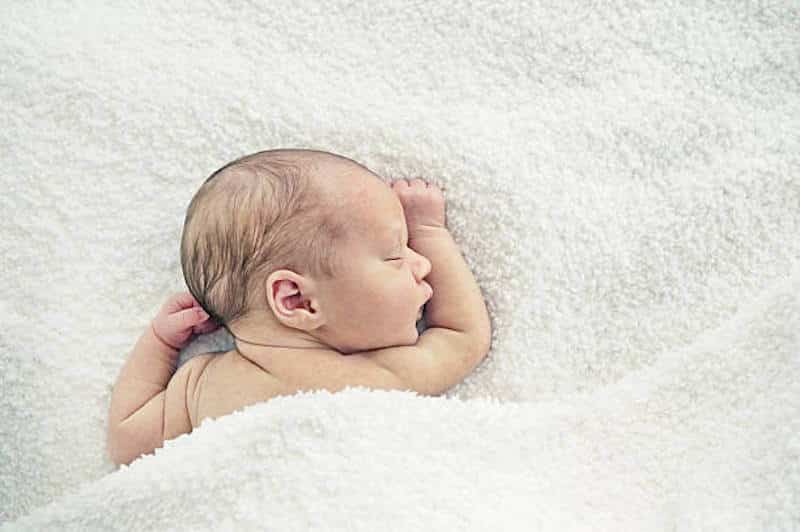
Trust Your Instincts if Something Doesn’t Seem Right
Now that you know the importance of keeping your baby close by, it’s important to also trust your instincts if something doesn’t feel right.
As a new parent, you may feel overwhelmed and unsure at times, but listening to your intuition can be one of the most valuable tools in creating a safe sleeping environment for your newborn.
While it’s always important to seek professional advice when needed, remember that you know your baby best. If something feels off or concerning, don’t hesitate to speak up and ask questions.
Balancing safety with comfort is key in creating a cozy space for your little one to rest peacefully. Trust yourself and take action if necessary – it’s better to be safe than sorry when it comes to the well-being of your child.
Conclusion
Congratulations on your new bundle of joy! As a new parent, creating a safe sleeping environment for your newborn is crucial. By choosing the right crib and mattress, dressing your baby appropriately, and keeping the sleeping environment safe, you can ensure that your little one gets the rest they need while minimizing potential risks.
Remember to always follow safe sleeping practices such as placing your baby on their back to sleep and avoiding loose bedding or soft objects in the crib. Additionally, make sure to check on your baby regularly throughout the night to ensure they are comfortable and safe.
By taking these simple steps, you can give yourself peace of mind knowing that you have created a secure sleeping space for your precious newborn.
